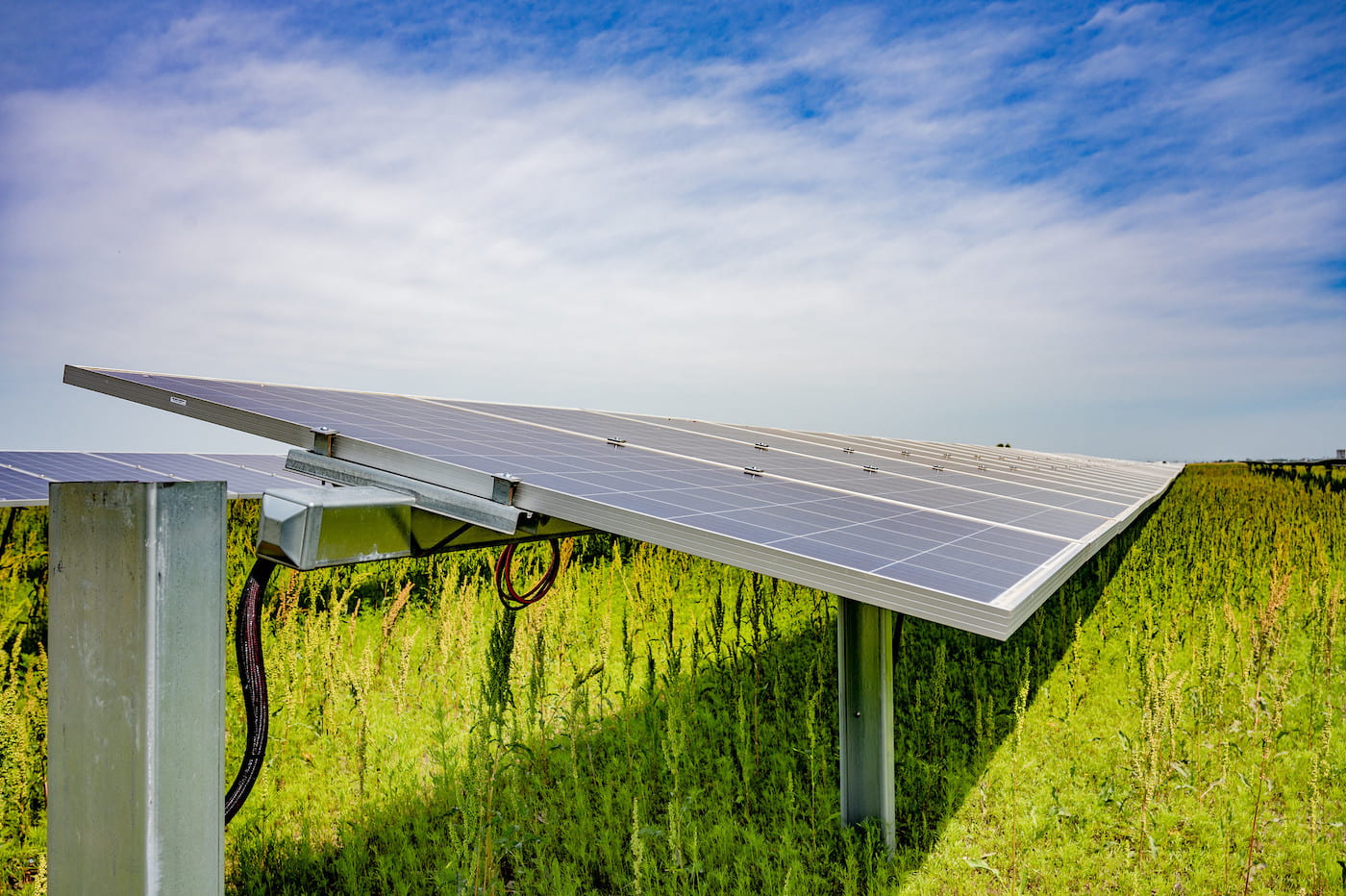Arkansas Agricultural Experiment Station Taps into Solar Energy
Solar array offsets over 80 percent of energy demand of research and extension center
By John Lovett – June 9, 2023

A 25-year solar service agreement with Entegrity Partners will provide renewable energy for over 80 percent of the annual electricity consumption at the Milo J. Shult Agricultural Research and Extension Center in Fayetteville. The experiment station is the research arm of the University of Arkansas System Division of Agriculture.
“A lot of what we do at the experiment station has an eye on the future of agricultural issues to feed more people with fewer resources,” said Jean-François Meullenet, director of the Arkansas Agricultural Experiment Station and senior associate vice president for agriculture-research for the University of Arkansas System. “The solar array aligns with our goals, allowing the experiment station to operate more efficiently and take advantage of this renewable resource.”
The experiment station stands to save tens of thousands of dollars annually on electricity costs, according to Entegrity Partners. The 3.6-megawatt solar array constructed near Hope began supplying energy to the grid on May 11.
Per the agreement, Entegrity Partners designed, built, and maintains the solar array for the experiment station and sells the electricity it produces at a competitive rate.
Estimated energy production for the first year is over 6,000 megawatt-hours of electricity, which is enough energy to power approximately 560 U.S. homes for one year, according to the U.S. Energy Information Administration.
How it works
While the energy produced by the solar array near Hope is not fed directly to the Shult Agricultural Research and Extension Center, the solar energy is converted from direct current to alternating current and measured before it hits the grid. The utility uses this power where needed on the grid, and the experiment station will receive an offset on its power bill equal to the amount of energy the array produced, Entegrity Partners explained.
The solar array includes 8,496 First Solar Series 6 modules that produce a mix of 415 watts and 440 watts each to produce 3,692 kilowatts of electricity. The 415-watt modules were manufactured in the United States, and the 440-watt modules were manufactured in Vietnam. The solar array occupies 17.5 acres.
To learn more about the Division of Agriculture research, visit the Arkansas Agricultural Experiment Station website. Follow us on 𝕏 at @ArkAgResearch, subscribe to the Food, Farms and Forests podcast and sign up for our monthly newsletter, the Arkansas Agricultural Research Report. To learn more about the Division of Agriculture, visit uada.edu. Follow us on 𝕏 at @AgInArk. To learn about extension programs in Arkansas, contact your local Cooperative Extension Service agent or visit uaex.uada.edu.
About the Division of Agriculture
The University of Arkansas System Division of Agriculture’s mission is to strengthen agriculture, communities, and families by connecting trusted research to the adoption of best practices. Through the Agricultural Experiment Station and the Cooperative Extension Service, the Division of Agriculture conducts research and extension work within the nation’s historic land grant education system.
The Division of Agriculture is one of 20 entities within the University of Arkansas System. It has offices in all 75 counties in Arkansas and faculty on three campuses.
Pursuant to 7 CFR § 15.3, the University of Arkansas System Division of Agriculture offers all its Extension and Research programs and services (including employment) without regard to race, color, sex, national origin, religion, age, disability, marital or veteran status, genetic information, sexual preference, pregnancy or any other legally protected status, and is an equal opportunity institution.




